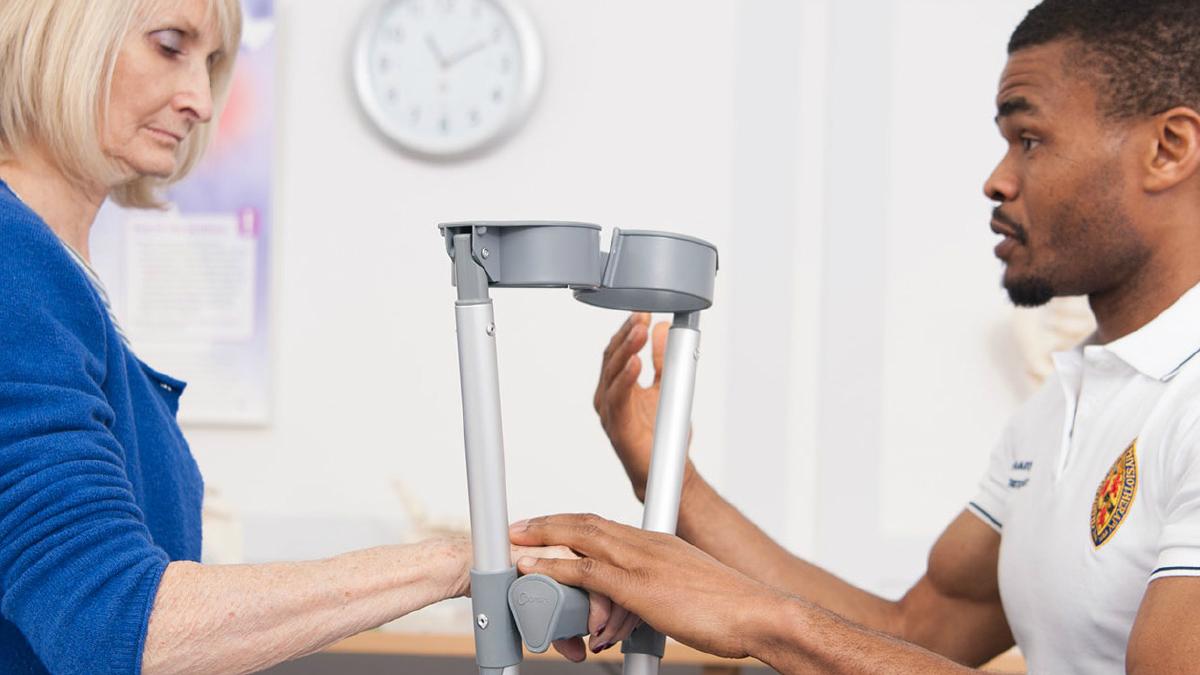Physiotherapy staff are encouraged to back the CSP’s arguments to Health Education England’s call for evidence for their long-term strategic framework for the health and social care workforce.

The deadline to complete a survey is Monday 6 September.
Last month, HEE was commissioned to work with partners and review long-term strategic workforce needs in health and social care, updating the work it did on this in 2014
This work will shape the size and training of the physiotherapy workforce for the next 15 years, which is why it is so important that the voice of the profession is heard.
There are significant policy commitments in England that make demands on the physio workforce – for example to expand access to rehab for respiratory, stroke, cardio, pelvic health – as well as policies on urgent community response and discharge to assess.
While there are new ways of working that can release some capacity, the bottom line is that the physio workforce is already overstretched and making these policies a reality requires an expansion in staffing with the right skills to meet changing population needs.
HEE’s call for evidence seeks to identify the factors that may have the greatest impact on demand for the health and social care sector over the next 15 years, and what this means for the workforce supply, to support patients and the population of the future. HEE are also planning on running a series of virtual engagement events which will be held during 2021-2022, which CSP members are urged to take part in to have their voices heard. Details to be announced shortly.
The CSP’s submission to the HEE - a summary
The most significant factor that must drive workforce development is the prevalence of long-term conditions – 40 per cent of people are managing a long-term condition and 25 per cent are managing two or more, and these figures are rising. The biggest rise is among people who are of working age.
Some of this is due to increased survival rate from many life-threatening conditions. For example, death rates from stroke are continuing to fall after halving in the decade up to 2010. Breast cancer survival is now at 90 per cent and is widely recognised as having become a chronic condition.
These medical advances are brilliant news for us all but must be accompanied by the services and care to enable people to live well as well as live longer.
NHS services are traditionally organised around single episodes and events. Support for people with long-term conditions continues to be largely focussed in and around secondary care, shaping narrow targets on admission avoidance or discharge. It is organised in condition-specific medical silos, that don’t yet respond effectively to the needs of people with multiple long term conditions.
Crisis-driven
Demographic trends mean that this crisis driven model of care is increasingly not fit for purpose.
If implemented the Long Term Plan will go a long way to achieving the step change in the system needed.
But this can only happen if the workforce most involved in addressing the needs of the population with chronic conditions is expanded in numbers and with the right mix of skills and capabilities.
Critical role of physio
Physiotherapy as part of multi-disciplinary teams is critical to this. Having multiple long-term conditions is closely associated with income, age, ethnicity, gender, sexuality and disability and having long-term physical conditions is linked to having depression and anxiety, particularly among women.
But physiotherapy and rehab services are significantly overstretched and the provision of rehabilitation is inconsistent - not reaching many of the people who need it most – driving a vicious circle of health inequity.
The physiotherapy workforce needs to be representative of the populations that it serves, at all levels of the profession. Physio student cohorts are becoming more ethnically diverse. This needs to be followed through with training and development opportunities post-reg so that physiotherapy leadership is equally representative.
Graduate numbers
There is positive growth in graduate numbers which is set to continue. This is great news for all sectors where physiotherapists work, including the NHS which should be capitalising on this growth to expand posts necessary to meet it's current policy commitments.
An expansion of the non-registered physio and wider rehab workforce is also critical, with training and development and career progression, in particular in exercise prescription.
Increasingly the physiotherapy workforce needs to be working across primary and community sectors, and equipped with a breadth of knowledge and skills across long term conditions, and understanding of population health.
This means pre-reg training to reflect this, and post reg a career structure that provides a pipeline for roles requiring advanced practice skills – such as MSK first contact physiotherapists in primary care and advanced clinical practice role for long term conditions in the community, community neuro specialists and pelvic health specialists attached to new maternity clinics.
Increased training in personalised care and shared decision making is critical for the whole physiotherapy workforce. Alongside this there is need for psychologically-informed provision where physiotherapists work with individuals, communities and populations to support sustained and meaningful behaviour change, helping them live well for longer.
Remote provision
By necessity, Covid has driven service provision that is online and remote. For the future, this will need to be part of the service options for the public, while recognising that it is not appropriate for all patients in all situations. Training the workforce to be effectively in remote provision and judging when this is and isn’t appropriate, will be key to the future.
So too is collecting and using data to understand population need and drive quality improvements – for example designing services to be more culturally appropriate for different communities and be accessible for people with learning disabilities.
Number of subscribers: 2



































